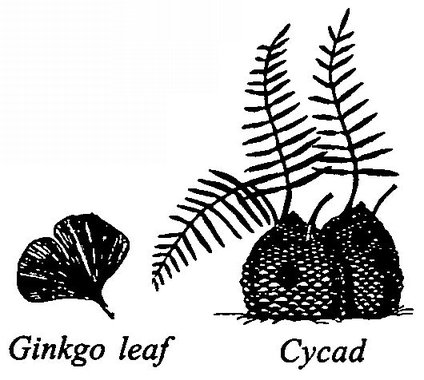Flowers Across the Land
Plants continued to change along with animals. The dense forests of giant ferns, horsetails, and mosses began to give way to gymnosperms, cone-bearing plants that are pollinated by the wind. The ripe seeds of gymnosperms contain food supplies and waterproof coverings. These seeds survive dry periods and sprout when rains come. Examples of early gymnosperms were conifers (evergreen trees with cones), ginkgo trees, and palmlike cycads.

The next big step in plant evolution was the appearance of angiosperms, or flowering plants. Their seeds were protected by specially adapted leaves called carpels. With the addition of other special leaves called petals and sepals, flowers were created. As angiosperms continued to evolve, their flowers became more colorful and elaborate.
Although some angiosperms depend on wind for pollination, many others are pollinated by insects. For example, as insects crawl or fly from one flower to the other, they carry pollen grains and deposit them on the flowers as they go. Early flowers were pollinated by any animal that came along, but angiosperm evolution led to special relationships between particular plants and insects. Today flowers “advertise” for certain animal pollinators with their shape, smell, and petal color, and “reward” the insects with nectar or pollen to eat.
Angiosperms have been very successful. From arctic grasses to tropical orchids and from desert cacti to swamp lilies, flowering plants are found nearly everywhere on Earth.
Arrange this flower garden to discover an interesting message about angiosperms. Beginning with the flower that has the number 1, select the flowers in numerical order and write their words in the blanks below. The first word is done for you.
